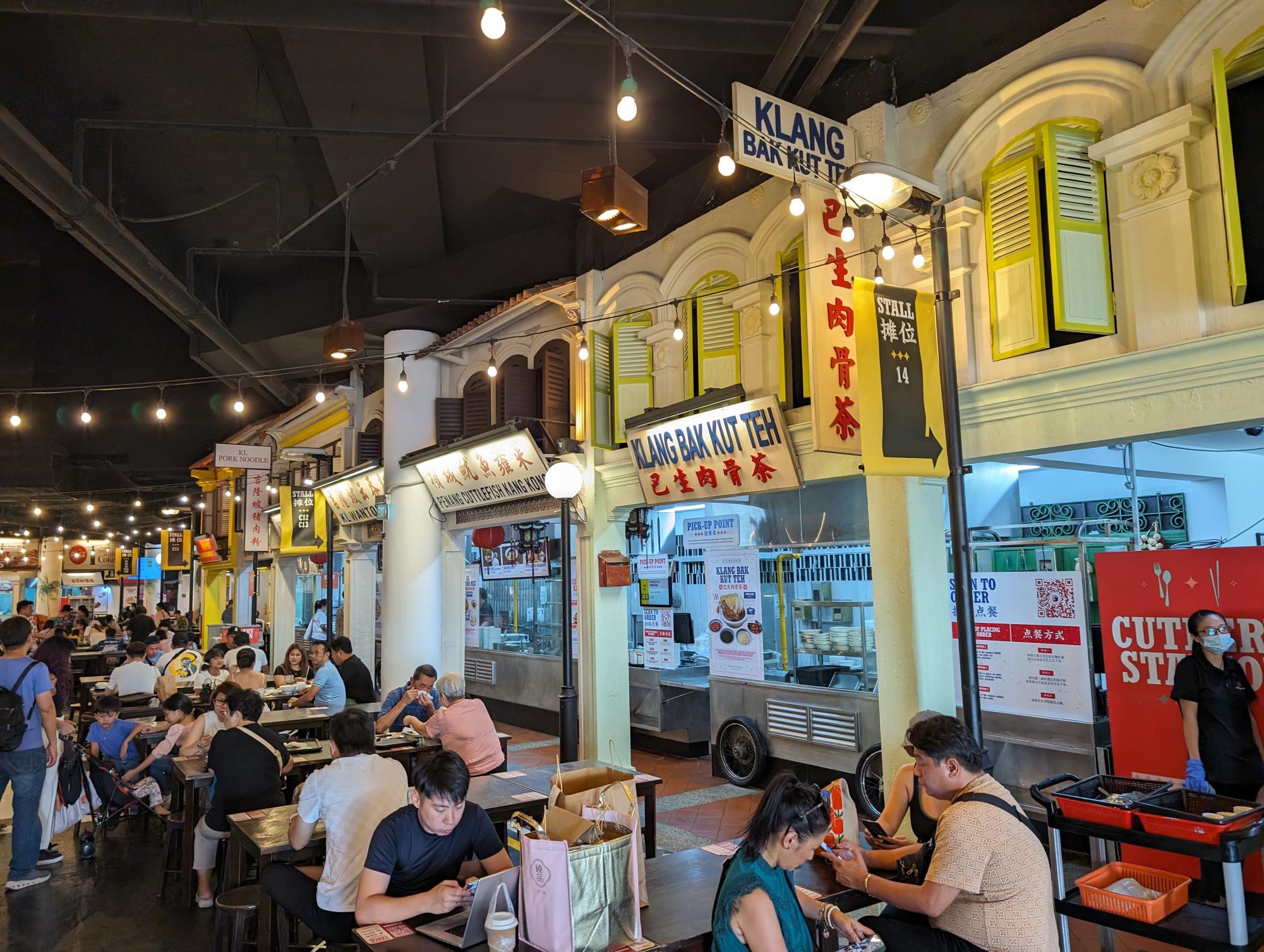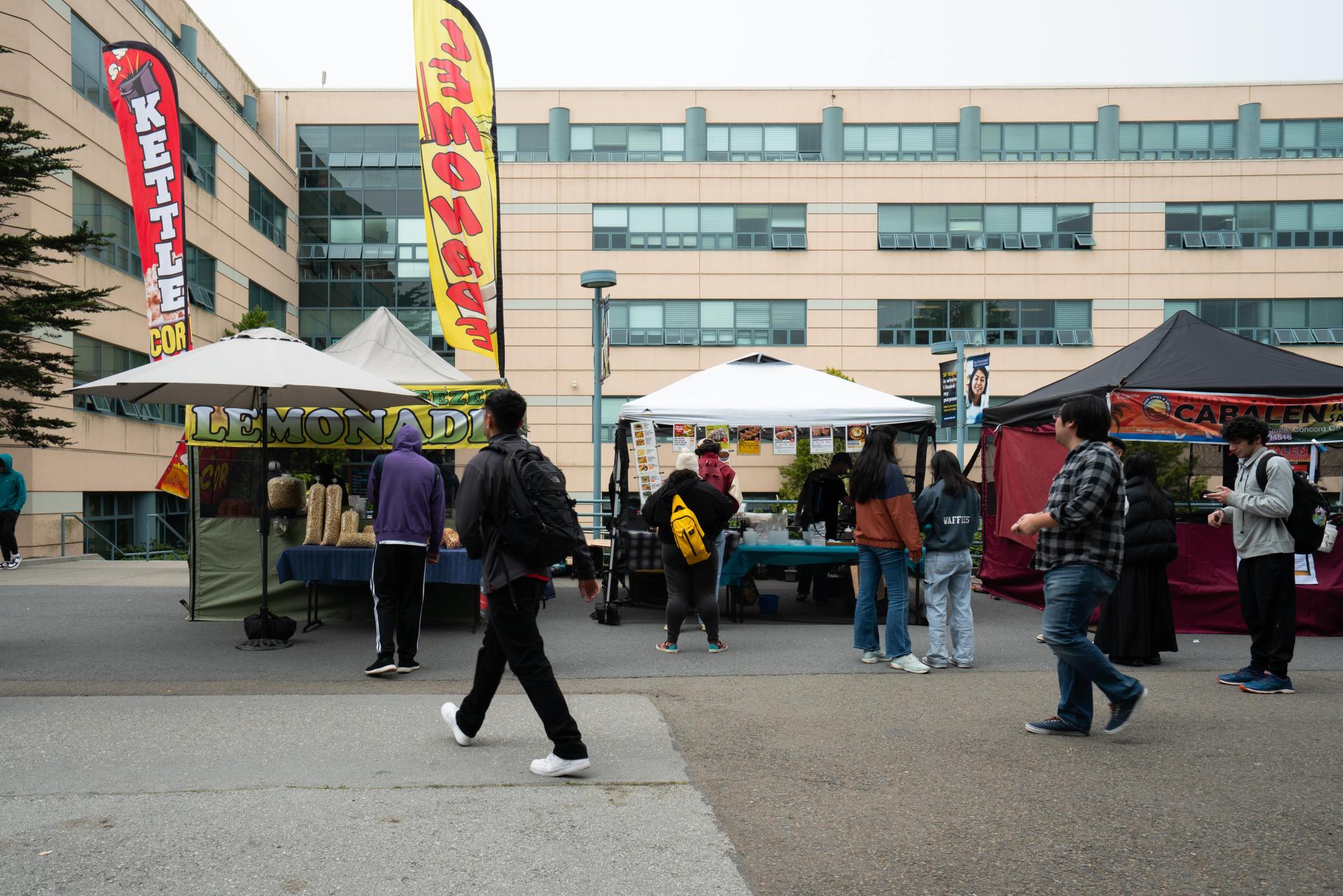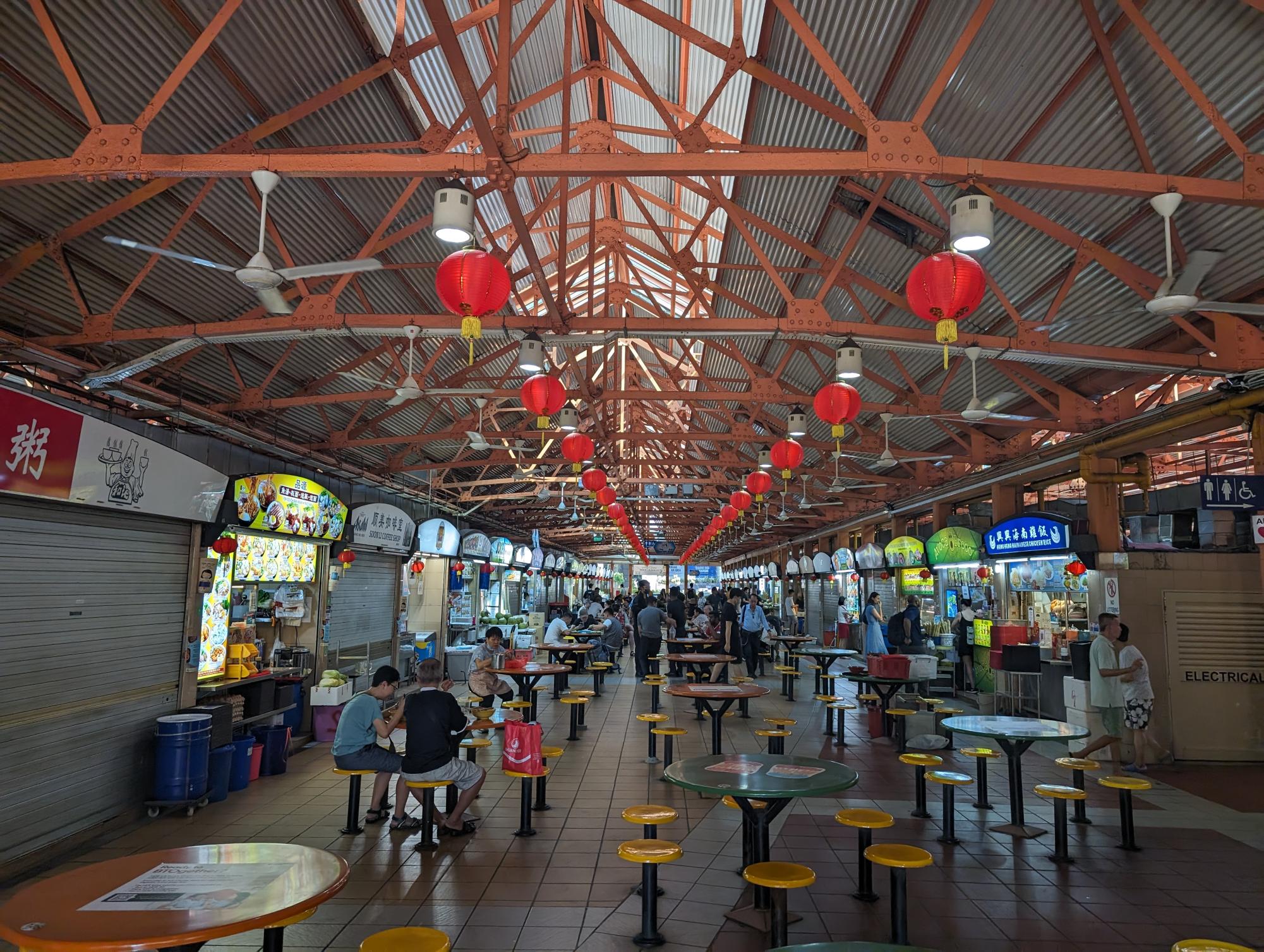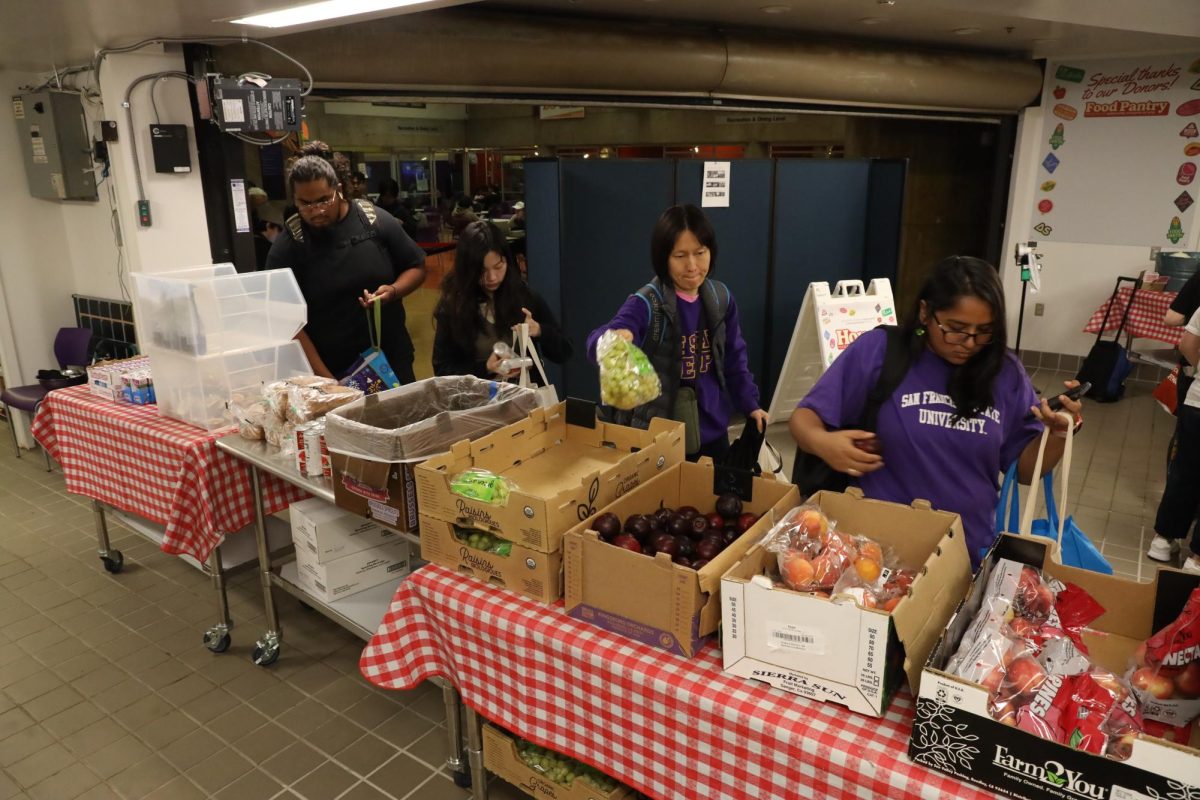
Students and staff at San Francisco State University deserve more — and better — food options. Having a food court would provide that.
Cesar Chavez Student Center’s ground floor comes to mind, but it only has a handful of food businesses indoors, so it’s not really a food court. Also, reports of pests, unsanitized food contact surfaces, and outdated certifications cast doubt on the safety of eating there. Furthermore, its unfriendly, unfinished concrete, awful lighting, and strange design make it fall short of what students deserve: a comfortable space to retreat from schoolwork and enjoy fairly priced, delicious and healthy meals. The colossal structural elements penetrating the dining space also limit its appeal as an event space.
Stonestown’s food is decent, but it takes at least 10 minutes to get there, making it inaccessible during the 15-minute periods between classes. And the options there seem to be pricier than the ones on campus.
What we need is a place similar to La Cocina Municipal Marketplace before it transitioned to just being a shared commercial kitchen last year.
That place was fantastic. Having plenty of seating allowed it to host events, and thoughtful art pieces were all around. There was bar seating and tables of different sizes so everybody could feel comfortable dining alone or with others. In that one-story building, aspiring food entrepreneurs served dishes like onigiri, pupusas and maafe.
A food court would allow everybody to experience food from different cultures.

With students from 103 countries and the first college of Ethnic Studies in the country, we lead the field of higher education in cultural diversity. So, it’s disheartening to see mostly fast food and cafe options at SFSU. While not every cuisine can be represented, the existing options are lacking and disappointing.
Cafe Rosso’s Korean BBQ bowls, consisting of vegetables and mushrooms doused in hot sauce over rice, seem to be the only “Korean” dish on campus. Also, there’s no good Chinese or Indian food in sight. It’s impossible to get something as simple as spaghetti because Nizario’s doesn’t sell pasta dishes anymore for some reason. The lines for the food businesses at the farmers market on Thursdays are physical proof that students welcome more options.
Did you know that at least six campus eateries are owned by one man? (They are Cafe Rosso, Station Cafe, HSS 121 Cafe, Village Market & Pizzeria, Taza Smoothies and Wraps, and Peet’s Coffee.) As the monopoly grows, quality dwindles. At the cafes, you can expect mediocre coffee, containers of fruit salad that have been sitting for an eternity and a half, “Spicy Tuna Rolls” with mashed and mutilated fish, rock-hard cookies, and reheated sandwiches. We need to have better food on campus.
Also, eating on campus isn’t cheap. The university estimates that students who don’t live on campus — and are therefore highly unlikely to have a meal plan — spend $7,506 to $11,520 every two semesters on food alone. If you’re buying lunch on campus every day you’re here, lunch is probably your most expensive meal of the day. According to a survey conducted in person by staff reporter Natalie Rocha and myself, the typical student spends $15.60 on lunch.

Cooking at home might not be an option for some of the 88.5% of SFSU students who don’t live on campus. Some commute from as far as Sacramento, Santa Rosa, and Monterey, according to a project by multimedia editor Bryan Chavez. Since so much time is spent on commuting and school work, there might not be enough time to cook, even if they wanted to. This results in many students depending on food options on campus and nearby, but they might not be affordable to the 41.8% of students likely to be food-insecure.
A food court might make things more affordable. Having more competition could disincentivize businesses from increasing prices. The university could also provide cheap lease rates so the food wouldn’t need to be priced as high, negotiate with businesses to cap prices, and provide meal vouchers to students in need.
And, opening a food court with lots of food businesses would mean lots of jobs available for students as the tuition hike looms. About 60% of students receive some sort of state or federal grant aid. This means that most students are also work-study eligible. Providing jobs would cost business owners less if work-study students were hired, which means more savings that could be passed on to customers.
Having a welcoming space with lots of kitchens that could be converted into an event space also opens up possibilities to host more food-related events. There could be cooking demonstrations, cooking classes, or free food events to support the university’s Basic Needs Initiatives.
So, where would this food court be?
The upcoming relocation of Student Health Services to the new Gator Health Center provides an opportunity to repurpose the Student Health Center building, which already has open spaces for seating and the infrastructure to provide plumbing and power to dozens of exam rooms, which could be merged to create stalls and more seating areas. If the building is renovated, it could be an interesting little food court.

According to Associated Students, the bookstore spans three floors. If you actually go to the student center and look, it’s only on one floor. The other two floors and portions of the building could be converted into cooking and dining spaces.
If repurposing existing spaces isn’t feasible, the campus also has acres of undeveloped land ready to be utilized, according to the FutureState Vision Plan, which lays out ideas for how the campus will look in 2035.
The plan also includes a proposal for a second student union building, which is logical given the numerous student organizations lacking dedicated spaces. If constructed, it could accommodate a new food court.
The SFSU community deserves a place to choose from a wide variety of delicious, affordable food options in a beautiful place.












